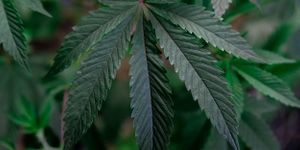Water scarcity predicted to worsen in more than 80% of croplands globally this century
Climate change is real and it’s happening literally right before our very eyes. These ongoing, observable effects include loss of sea ice, accelerate seal level rise and longer, more intense heat waves, and scientists predict that these human-caused effects will worsen in the decades to come. One of these long-term effects is water scarcity, and a new study in Earth’s Future reveals that agricultural water scarcity is expected to increase in more than 80% of the world’s croplands by 2050. This is particularly alarming for two reasons: 1) Croplands are quite literally how we get our food and 2) The year 2050 is only 28 years away, making this study hard to ignore.
The new study examines current and future water requirements for global agriculture and predicts whether the water levels available, either from rainwater or irrigation, will be sufficient to meet those needs under climate change. To do so, the researchers developed a new index to measure and predict water scarcity in agriculture's two major sources: soil water that comes from rain, called green water, and irrigation from rivers, lakes and groundwater, called blue water. It's the first study to apply this comprehensive index worldwide and predict global blue and green water scarcity as a result of climate change.
"As the largest user of both blue and green water resources, agricultural production is faced with unprecedented challenges," said Xingcai Liu, an associate professor at the Institute of Geographic Sciences and Natural Resources Research of the Chinese Academy of Sciences and lead author of the new study. "This index enables an assessment of agricultural water scarcity in both rainfed and irrigated croplands in a consistent manner."
In the last 100 years, the demand for water worldwide has grown twice as fast as the human population. Water scarcity is already an issue on every continent with agriculture, presenting a major threat to food security. Despite this, most water scarcity models have failed to take a comprehensive look at both blue and green water.
In the United States alone, trends in total-water (combined surface and groundwater) withdrawals have shrunk more than 20% since 2005 while the population has increased approximately 10% and continues to climb. This inverse relationship will undoubtedly lead to food price increases while 64% of Americans currently live paycheck to paycheck. In less developed nations, this could lead to severe droughts and famine on unprecedented scales, as well.
The new index could help countries to assess the threat and causes of agricultural water scarcity and develop strategies to reduce the impact of future droughts.
Multiple practices help conserve agricultural water. Mulching reduces evaporation from the soil, no-till farming encourages water to infiltrate the ground and adjusting the timing of plantings can better align crop growth with changing rainfall patterns. Additionally, contour farming, where farmers till the soil on sloped land in rows with the same elevation, prevents water runoff and soil erosion.
"Longer term, improving irrigation infrastructure, for example in Africa, and irrigation efficiency would be effective ways to mitigate the effects of future climate change in the context of growing food demand," Liu said.
As human-caused climate change continues to ravage the planet, we must adapt to this new reality if the human race is to survive in the coming decades.
As always, keep doing science & keep looking up!
Sources: NASA, Earth’s Future, United States Geological Survey, CNBC









